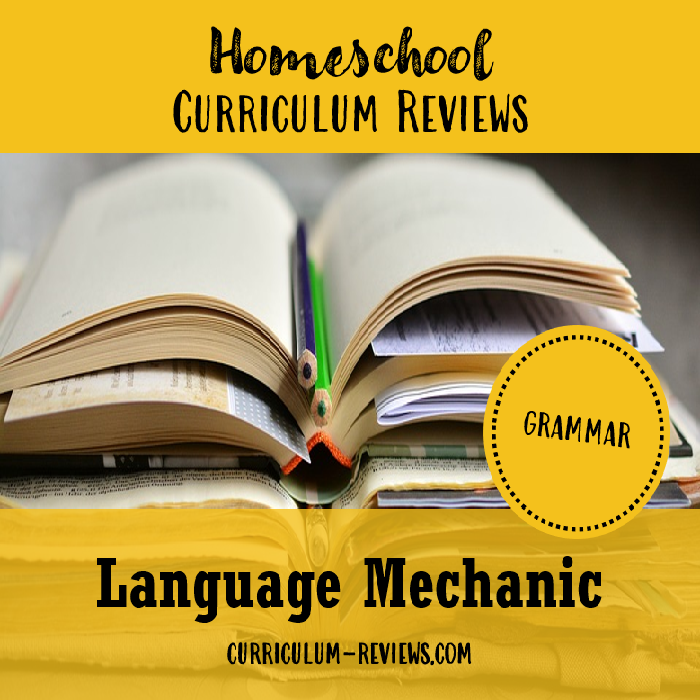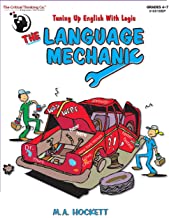
Language Mechanic
Target Grade Level: 4th – 7th
If you’ve got a quirky kid who likes logic, enjoys word humor, and picks language rules up quickly, then Language Mechanic may be a good grammar curriculum for your family.
Each individual lesson begins with an attention “grabber” – a basic fact which is then followed by three sentences: You Write; Reader’s Think; and You Mean (to say). The sentences illustrate a specific grammar rule and demonstrate how it can be misused or misunderstood. A simple grayscale drawing accompanies the sentences to help draw out the humor.
A logic box follows, explicitly stating the grammar rule and why it works. Students then complete the Practice items with an adult before attempting the Your Turn section. End-of-lesson Challenge questions can be saved for the next day to reinforce the grammar rule. All told, individual lessons should take no more than 15-20 minutes.
Each chapter concludes with a Unit Review, which you can use as a quiz, if you like. These 1-2 page review sheets offer editing practice, as students are challenged to find grammatical mistakes. The author directs readers to use an improvised set of proofreading marks, such as circles and arrows for errors. Homeschool parents, however, may want to introduce the more traditional proofreading notations with these lessons.
Chapter Summary:
1- Capitalization
2- Run-Ons and Fragments
3- Pronouns
4- Modifiers
5- Verbs
6- Agreement
7- Unnecessary Words
8- Punctuation: ‘ ? ! “”
9- Punctuation: Comma
10- Friendly Letter
11- Spelling and Vocabulary
Because the logical explanations in Language Mechanic are so clearly written, it might seem tempting to hand off this workbook to your 10-year old to complete on their own. I would suggest not doing that.
This book does a great job of showing how the nuances of language can turn a well-meaning intention into a silly sentence. But, nuances are just that – very small differences that can be easily overlooked. Spending 5 or 10 minutes reviewing the “grabber” and the practice items in each lesson will ensure that your child fully grasps the logic behind the grammar rule.
Language Mechanic is especially well-suited for reluctant writers or children who have difficulty with handwriting. Questions within each lesson require a combination of circling the correct choice to complete a sentence, matching, filling in boxes, and the occasional writing out of complete sentences. Children who take longer to understand language concepts may not benefit from this grammar curriculum, as it doesn’t provide enough practice items that they may need.
Creating a grammar curriculum for a broad range of ages, such as 4th – 7th grade, is difficult. Language Mechanic does a great job of teaching the topics it does cover, however certain grammar concepts are missing – such as prepositions. In addition, you may find yourself looking for supplemental information and exercises to reinforce adverbs and commonly misused words (ex- lay/lie).
A teacher’s manual is not available for Language Mechanic. Reading through the Introduction, however, will be extremely useful for understanding how you can get the most out of this book. In addition to general tips on implementing the lessons, you’ll also find extension ideas for each chapter “unit”. Answers for all questions can be found in the back of the book.

About the Author: Margaret Hockett grew up on a farm before going to college for degrees in psychology and instructional design. In addition to writing curricular material for Critical Thinking Press, Margaret also writes novels and lyrics, including a musical parody of the War of 1812.
Date of Review: 11/13/2018


